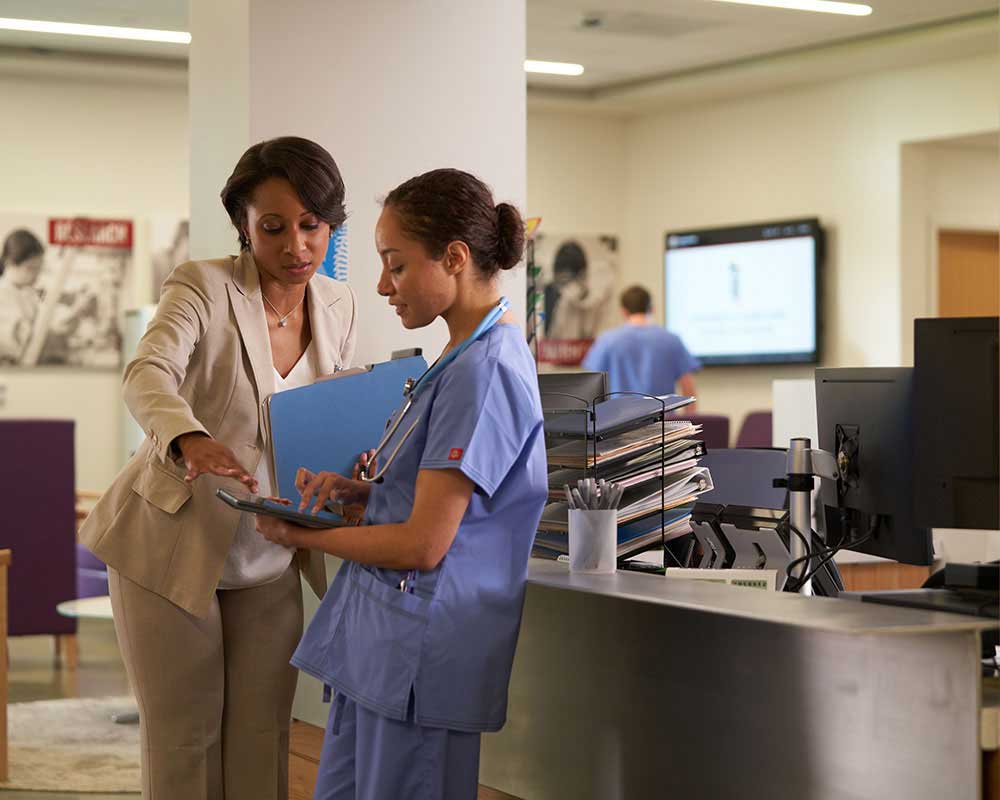Top Abilities Required to Excel in Medical Administration Roles Today
Ideal Practices in Medical Administration for Improving Performance and Minimizing Expenses
In the ever-evolving landscape of health care, the search of ideal techniques in clinical administration is vital for enhancing performance and suppressing expenditures. By integrating sophisticated innovations such as electronic wellness records and telemedicine, doctor can streamline procedures and enhance individual treatment. Nonetheless, innovation alone is not a panacea; enhancing source allocation and fostering joint communication amongst treatment groups are just as essential (medical administration). As organizations aim to balance high quality and price, what strategies should be prioritized to accomplish these double objectives? The response to these inquiries hold the secret to an extra lasting healthcare system.
Leveraging Advanced Modern Technology
The assimilation of electronic remedies into medical care systems has transformed the means centers run, simplifying processes and boosting person care. By streamlining individual info, EHRs remove the need for difficult paperwork and promote seamless communication among health care companies.
Telemedicine is an additional technological development that has actually revolutionized individual communication. It provides ease for both individuals and healthcare specialists by making it possible for remote appointments, which can reduce the need for in-person gos to and optimize consultation organizing. In addition, telehealth platforms can prolong medical care accessibility to country or underserved areas, bridging spaces in care shipment.
Furthermore, making use of Expert system (AI) and device learning is ending up being significantly common in predictive analytics, enabling early discovery of prospective health concerns and even more educated decision-making. These modern technologies, when incorporated effectively, can enhance diagnostic precision and customize individual therapy plans, inevitably causing enhanced medical care outcomes and operational efficiency.
Optimizing Source Appropriation
Efficient source appropriation is crucial for making the most of the performance of clinical administration. By purposefully handling sources such as personnel, tools, and financial resources, healthcare facilities can considerably enhance their operational performance, enhance patient results, and lower unneeded expenses. The initial step in maximizing resource allocation entails carrying out a thorough evaluation of present possessions and recognizing locations where sources might be underutilized or exhausted. This evaluation must be data-driven, making use of metrics and analytics to inform decision-making processes.
Focusing on resource allocation based on client requirements and solution needs is important. This includes straightening resources with high-demand locations, such as emergency care or specialized therapies, to make certain timely and reliable individual treatment. Implementing flexible staffing designs can additionally enhance labor sources by readjusting workers appropriation in response to rising and fall individual quantities. Additionally, embracing telemedicine and other technological options can ease physical resource constraints by using different opportunities for patient-provider interactions.
Funds must be meticulously monitored and assigned with calculated insight to support both short-term operational requirements and lasting institutional objectives. This includes investing in training programs that enhance team competencies and taking on energy-efficient techniques that lower operational prices (medical administration). Eventually, a maximized source appropriation strategy promotes a sustainable medical care setting that is receptive, effective, and monetarily sensible
Streamlining Operations Processes
When healthcare facilities aim to improve operational efficiency, improving process procedures ends up being a pivotal emphasis. Reliable operations minimize redundancy, eliminate unneeded steps, and boost coordination amongst medical care professionals. This strategy not just accelerates service distribution but also boosts the quality of patient treatment.

Following, technology combination plays a significant function in streamlining operations. Executing electronic wellness records (EHRs) and digital doctor order entry (CPOE) systems minimizes paperwork, reduces human error, and ensures info is easily accessible to why not look here all appropriate workers. In addition, leveraging telemedicine systems can enhance patient consultations and follow-ups, lowering the stress on physical framework.

Inevitably, streamlined workflows lead to set you back decreases and improved patient contentment, fostering an extra lasting medical care setting.
Enhancing Data Monitoring
Building upon streamlined operations, optimizing information management becomes an essential element in advancing important site health care management. Reliable data management systems are crucial for maintaining exact person documents, enhancing decision-making, and making certain conformity with regulatory requirements. By carrying out robust data monitoring services, health care centers can enhance the top quality of person care while concurrently minimizing operational costs.
One key facet of boosting information management is the integration of advanced electronic health record (EHR) systems. These systems assist in the seamless exchange of client information across various departments, decreasing replication of examinations and lessening mistakes. A properly designed EHR system supports data analytics, enabling doctor to identify fads and make informed decisions regarding person treatment.
In addition, guarding individual information is vital. Adopting extensive cybersecurity procedures, consisting of encryption and regular audits, makes sure the integrity and discretion of sensitive information. This not just secures patients yet additionally maintains the organization's credibility.
Purchasing personnel training is an additional important variable. Enlightening healthcare specialists on information administration methods improves their capacity to properly utilize technology, bring about improved client end results. Finally, improving data administration via sophisticated modern technology and thorough training is essential for achieving performance and cost reduction in clinical management.
Fostering Collaborative Communication
A vital element ahead of time medical administration is fostering joint interaction among healthcare experts. Effective communication is extremely important for making certain smooth client care, enhancing check treatment end results, and decreasing mistakes. By urging open dialogue and control across multidisciplinary teams, health care organizations can enhance their functional efficiency and lower unneeded expenses.
Central to this technique is the combination of communication innovations such as electronic health and wellness records (EHRs) and secure messaging platforms, which promote the fast exchange of vital individual info. These devices make it possible for doctor to access and share information in actual time, guaranteeing that all employee are informed and straightened in their decision-making processes. Regular group conferences and interdisciplinary rounds can even more promote a culture of partnership and responsibility.
Training programs focused on boosting communication abilities are likewise vital. These programs can assist personnel establish the ability to convey info clearly and listen proactively, thus minimizing misunderstandings and cultivating a helpful workplace. In addition, adopting standard communication protocols, such as SBAR (Situation, Background, Assessment, Referral), can simplify the exchange of info, making certain that essential information are shared succinctly and successfully. Ultimately, cultivating collective communication leads to boosted medical care delivery and price savings (medical administration).

Conclusion
Including advanced innovation, such as electronic health documents and telemedicine, along with enhanced source allowance and streamlined operations processes, is important for enhancing effectiveness in medical management. Efficient data monitoring and promoting collaborative interaction amongst medical care teams are important for reducing redundancies and enhancing care quality. By prioritizing precautionary care and engaging in quality enhancement initiatives, health care companies can accomplish substantial price savings and enhanced person outcomes, thus guaranteeing sustainable medical care distribution in a progressively complex atmosphere.